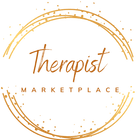As psychotherapists, our main goal is to help our clients achieve and maintain good mental health. We utilize different approaches and treatments to ensure that our clients have the best experience in their therapy sessions, and that they leave their sessions feeling heard, understood, and empowered. One aspect of therapy that can make a huge difference in the success of our clients is the use of therapy resources. In this blog, we’ll explore creating therapy resources for mental health with creativity and innovation, and how it can improve therapy practice and client outcomes.
- Why use therapy resources?
Therapy resources can come in different forms (to list a few!):
- handouts,
- worksheets,
- workbooks,
- card decks,
- games,
- group therapy curriculum,
- psychoeducation,
- practice administration,
- supervision support and documentation,
- trackers,
- protocols,
- report templates,
- recommendation lists,
- video how-to’s,
- guided meditations,
- etc.
These resources can be used in conjunction with traditional therapy sessions or as a standalone resource. Your client can take home the resources and complete them at their own pace or utilize the tools when needed, which can enhance their engagement in therapy and their overall understanding of their mental health. Therapy resources also provide structure and focus on specific areas or issues that the client wants to work on. It helps to extend the therapeutic process beyond the time-limited sessions and creates a sense of continuity and progress.
- Creating therapy resources with creativity and innovation.
Creating engaging therapy resources doesn’t have to be boring and repetitive. They can be made creatively and innovatively. You can use the client's interests as a starting point in creating the resources, such as developing activities related to their hobbies or creating fun games. You can also use technology to create interactive resources that your clients can access anytime and anywhere. Online applications can make therapy resources more accessible and engaging.
- Considering cultural diversity.
It's important to consider cultural diversity when creating therapy resources. Clients come from different backgrounds, and their cultures play a significant role in their experiences and perspectives. Therapy resources can be tailored to the client's cultural background and values to ensure that they resonate with them. You can incorporate cultural themes or symbols in designing the resources to make them more relatable to the client.
- Encouraging self-reflection and self-awareness.
Therapy resources should encourage self-reflection and self-awareness. It’s important to provide a safe space for clients to identify and express their thoughts and emotions. Therapy resources such as journaling prompts, mood trackers, and mindfulness exercises can enhance the client's self-awareness and help them process their thoughts and emotions outside of therapy sessions. These resources can also help clients develop healthy coping mechanisms and improve their overall mental health.
- Empowering clients to become agents of their mental health.
The ultimate goal of creating therapy resources is to empower clients to become agents of their mental health. It's crucial to involve clients in the implementation of these resources to increase their sense of ownership and engagement of the process. Encourage feedback and welcome suggestions from your clients to improve the resources to best match and respond to their needs. By providing clients with engaging therapy resources and involving them in the process, you're giving them the tools to take control of their mental health, leading to better outcomes and an improved therapy practice.
Creating therapy resources with can be a powerful tool to improve therapy practice and client outcomes. By providing clients with engaging and effective therapy resources, you're empowering them to take control of their mental health. It's also essential to consider cultural diversity when creating resources as well as encouraging self-reflection and self-awareness. Make therapy resources an integral part of your practice and involve your clients in the process to ensure that the resources resonate with them. Remember, the ultimate goal is to empower your clients to become agents of their mental health, leading to better outcomes and a more successful therapy practice.

